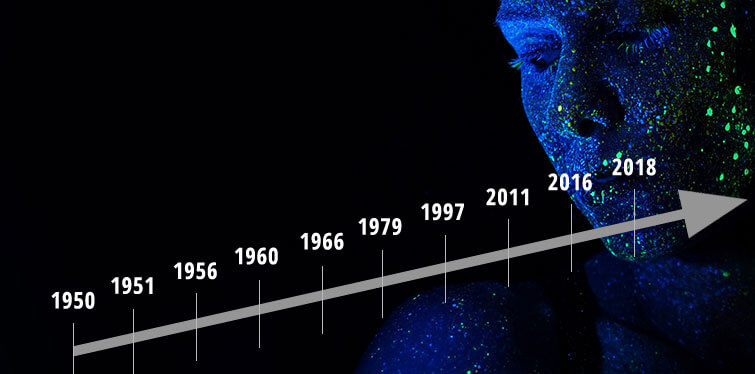
From Turing to hair appointments
Artificial intelligence is a key trend – but how did it all start? Here are the most important events.Der britische Mathematiker Alan Turing developed a process for testing whether a computer was capable of intelligence. The idea behind it is very simple: A human tester talks to two invisible partners in a chat. Then the person has to decide which one of them was a computer. If at least 30 percent of testers can’t unmask the computer, then it has passed the test. The Turing test is still used today.
SNARC (Stochastic Neural Analog Reinforcement Computer), the first neurocomputer, had just 40 synapses. It was built by American mathematician Marvin Minsky. The machine simulated the behaviour of lab rats and was able to find the fastest way out of a labyrinth.
A scientific conference at Dartmouth College in Hanover (New Hampshire) is considered the birthplace of artificial intelligence as a separate research discipline. In his application for the conference, information scientist John McCarthy used the term artificial intelligence for the first time.
American psychologist and information scientist Frank Rosenblatt implemented a concept called Perzeption in the computer Mark I, making the computer capable of learning. He did so on a “trial and error” basis. This laid the cornerstone for neural networks.
German-American information scientist Joseph Weizenbaum developed the first chat bot, which simulated a psychotherapist. It was named Eliza. It reacted to keywords, and frequently answered with questions or general phrases. Nevertheless: Some testers were convinced that Eliza showed an understanding of their problems.
What a success: German-American information scientist Hans Berlinerdeveloped a backgammon program that beat former world champion Luigi Villa from Italy. This was the first time an AI technology won out over a human champion.
The computer Deep Blue wins against former Russian world chess champion Garri Kasparow. The roles were reversed just one year earlier. What helped the computer win: More powerful hardware.
The computer program Watson (from IBM) competed against two master players on the American game show Jeopardy!. Although they had already won record totals on the show, Watson won handily. The program understands questions in natural speech, and searches for the answers in a giant database. Its massive quantity of data was an unbeatable advantage.
Virtual assistants come to the market
A personal assistant for anyone: Software from Apple is also designed to recognise natural speech and answer questions. Siri understood English, German and French to start, and now speaks over 20 languages. Microsoft has also put out its own assistant, Cortana (2014), and Amazon offers its language services with Alexa (2015).
Go is an extremely complex Chinese board game with an almost infinite number of possible moves. With its AlphaGo software, Google succeeded in beating out exceptional South Korean player Lee Sedol with a score of 4:1. The software uses a neural network called AlphaGo, is capable of learning, and not only knows all the matches, but has also learned the game concept. AlphaGo has now been developed into AlphaZero, which can also play chess and Shogi. The self-learning algorithm was able to play at a better-than-human level within just a few hours.
At one of its conferences, Google demonstrated how the AI “Duplex” called the hairdresser to set up an appointment in a casual tone. What’s unique about the experiment is that the woman at the other end of the line never noticed she was talking to a machine.